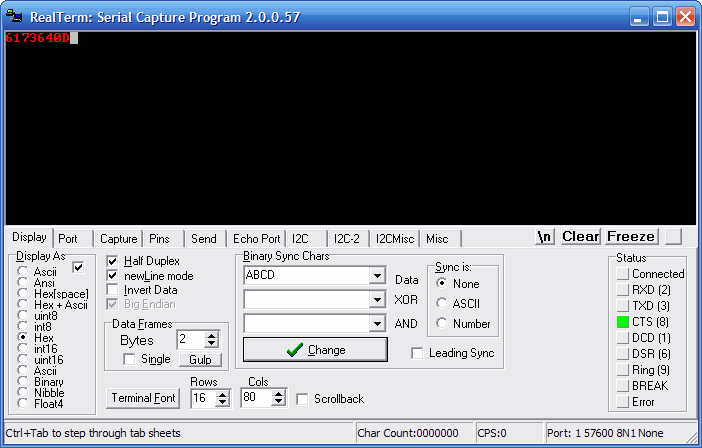Some notes on endianness
Endianness
I recently found that my ideas of endianness were conflated with bit significance so I tried to straighten them out here.
Simply put, endianness is the order of bytes in a word. The typical context is in computer memory.
Now, accessing memory is not the only place where you have to reason about the order of bytes. Consider data you are reading off of the network or a wire. Just as in the case of memory, in order to make any sense of the sequence of bytes, you must establish the endianness of the data being consumed.
 |
|---|
| RealTerm Serial Program Endianness Setting |
You might care to know that different transmission protocols will define these things for you. For instance, the IP suite protocols all use a big-endian format (though they call it network-byte order).
At this point you might be wondering if we can take this endianness idea one level deeper and apply it to the order of bits in a byte. The answer is yes, or at least, I see no reason it cannot be. If consuming bit-by-bit off of a wire we absolutely have to know the most significant bit to interpret the byte value. However, seldom are we working with single bits. Far more likely is that the byte is our atomic unit. For that reason you probably won’t hear much about bit-endianness.
Bit Significance
I want to make mention of something that tripped me up when interpreting bit-endianness.
As mentioned above, one might point out that endianness is a bitwise problem too. For example, given the binary number, 0b110, must we not establish which bit is significant to understand the value? The answer is of course we need to know the most significant bit but this is a different problem. Endianness is about interpreting a sequence or a stream of bytes. Here, is not a stream of bytes or collection of bits in the same context. What we have here is a single value. And the convention for interpreting values or establishing digit significance is the same in every numerical base; the most significant digit is first. For example:
In binary:
0b110 = 1*2^2 + 1*2^1 + 0*2^0 = 4 + 2 + 0 = 6 (decimal)
In octal:
0o175 = 1*8^2 + 7*8^1 + 5*8^0 = 64 + 56 + 5 = 125 (decimal)
In decimal:
345 = 3*10^2 + 4*10^1 + 5*10^0 = 300 + 40 + 5 = 345
In hexadecimal:
0xFE3 = F*16^2 + E*16^1 + 3*16^0 = 15*16^2 + 14*16^1 + 3*16^0 = 3840 + 224 + 3 = 4067 (decimal)
It was tempting for me to reduce representations of a binary number to a sequence of bits, and indeed you could even almost square this with the definition, but context is everything. The sort-of mathematical or conventional representation of a number has nothing to do with memory or data transmission. As such, endiannesss does not apply.